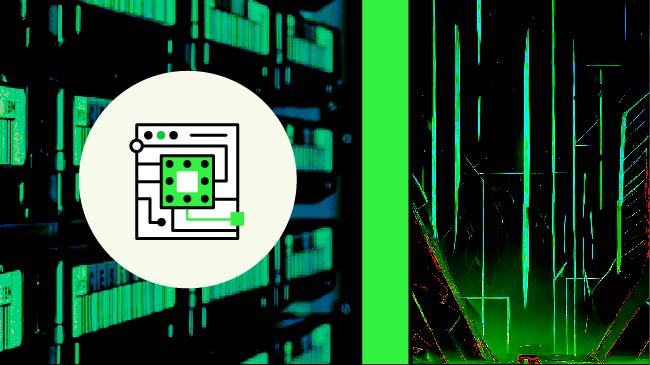Power11 Models Under the Hood: From Scale-Out to High-End
Exploring the capabilities and target markets of the generation’s four core server models

Whether you’re a sprawling global enterprise or the humble little shop down the street, the Power11 family has a server targeted toward you. And for the first time in IBM Power history, that full range of models is available at launch.
So, here’s a look at who the four core models are for, followed by a deeper dive into each server’s performance.
Power E1180

- Power11’s high-end model, made for large-scale, complex IT environments
- Runs IBM AIX, IBM i and Linux
- Available on Power Virtual Server at launch
Power E1150

- Power11’s midrange enterprise server, for memory- and data-intensive workloads at companies ranging in scale from mid-size to the largest in the world
- Runs IBM AIX and Linux
Power S1124

- A scale-out server for enterprises and regional data centers requiring strong compute, memory and hybrid cloud flexibility
- Runs AIX, IBM i and Linux
Power S1122

- A scale-out server for small-to-medium-sized businesses, remote branches and space-constrained environments
- Runs AIX, IBM i and Linux
- Available on Power Virtual Server at launch
Performance Improvements
At the top end of the Power11 family, the E1180 model boasts up to 256 Power11 cores and 64 TB of DDR5 memory. The result of all that hardware is 10% more rPerf (IBM’s relative performance metric) per watt than the comparable Power10 model. “The Power E1180 is intended to help organizations pursue business continuity, cyber resilience, and scalable growth while supporting hybrid IT strategies,” the data sheet for the model states.
Power11’s other main enterprise-level model is the E1150, which comes with up to 120 Power11 cores and 16TB of DDR5 memory, amounting to an rPERF increase of up to 20% over its comparable predecessor. “With 30-core sockets, high-speed DDR5 memory, and modular I/O and storage, it offers a foundation designed to scale compute resources to meet growing demands in analytics, ERP and batch processing,” the E1150 data sheet states.
Between the two main models in Power11’s scale-out tier, the S1124 brings the most oomph, accommodating up to 60 Power11 cores and 8 TB of DDR5 memory. This yields an rPERF increase of 37% per watt over the comparable Power10 model. “IBM Power S1124 is a 4U server designed for enterprises and regional data centers that need strong compute, memory, and hybrid cloud flexibility,” the S1124 data sheet states.
Rounding out the field is the S1122, which also hosts up to 60 Power11 cores but a maximum of 4 TB of DDR5 memory. However, the model provides the greatest performance gains over its predecessor, clocking at 37% more rPERF per watt, 6.9x per dollar improved AI performance and a 58% reduction in AI inference latency. “Built for cost-efficiency, hybrid cloud flexibility, and simplified management, the Power S1122 helps organizations run mixed workloads, scale easily, and modernize infrastructure without complex replatforming,” the model’s data sheet states.
Energy Efficiency
To provide flexibility in energy consumption based on use case, Power11 features three energy usage modes:
- Maximum Energy Saver – Processors are set to a low-frequency value regardless of workload and environmental temperatures.
- Energy Efficient – Scheduling workloads to run at the lowest possible wattage, this setting is ideally suited to workloads with predictable or lower compute demands. “This mode is perfect for organizations focused on sustainability initiatives and reducing operational expenditures,” says Daniel Goldener, principal product manager for IBM Power.
- Maximum Performance mode – For mission-critical, high-throughput, latency-sensitive workloads like core banking applications, large-scale SAP HANA deployments, real-time analytics and AI inferencing, and high-volume e-commerce platforms. “This mode allows the system to reach the maximum frequency value by taking advantage of thermal and energy headroom provided by idle cores, lower workloads and favorable environmental conditions. This is considered the standard, default mode,” Goldener says.
The extent to which the Power11 models take advantage of Energy Efficient mode varies. The models finding the most power savings in Energy Efficiency mode are the E1150 and S1124, which both bring up to 28% improvement in energy efficiency over Maximum Performance mode.
The next-best gains in efficiency come in the E1180, which can provide an improvement of up to 22% in Energy Efficiency mode. When leveraging Resource Groups, a way of dispatching workloads that is new with Power11 (see below), that number can climb to 25%.
The S1122 sees the lowest difference between Energy Efficiency mode and Maximum Performance mode, with a 13% improvement.
Resource Groups
A new aspect of IBM Power is the inclusion of Resource Groups, which help to maximize effective performance and make it consistent and predictable, Goldener explains. This is especially true in multi-processor, shared workload environments.
“While raw processor speed is vital, Resource Groups are a sophisticated software optimization that allows for workload isolation,” Goldener says. He further explains that Resource Groups allow for the logical grouping and prioritization of CPU resources for specific applications, ensuring the most critical applications get the resources they need.
The Resource Group concept applies to resources within the same system, but resources can also be pooled between multiple Power systems, including Power10 and Power11, Goldener notes.
Not Done Yet
While the four main versions of Power11 are all being released on GA Day, more is yet to come. IBM’s portfolio strategy also includes a one-socket Power11 model designed for edge computing, coming soon, Goldener notes.
These plans, he continues, demonstrate “our continuous innovation and commitment to expanding the Power ecosystem.”